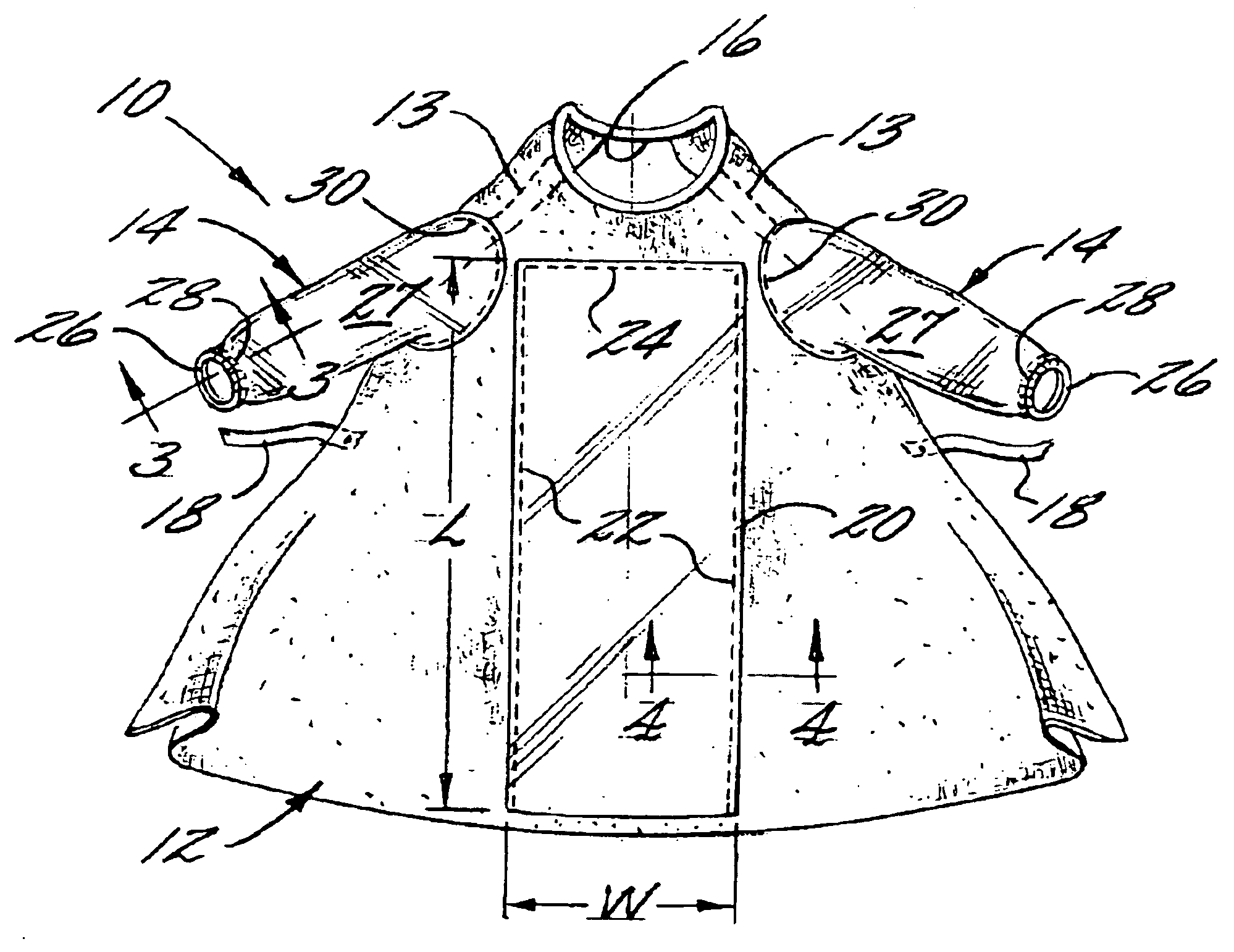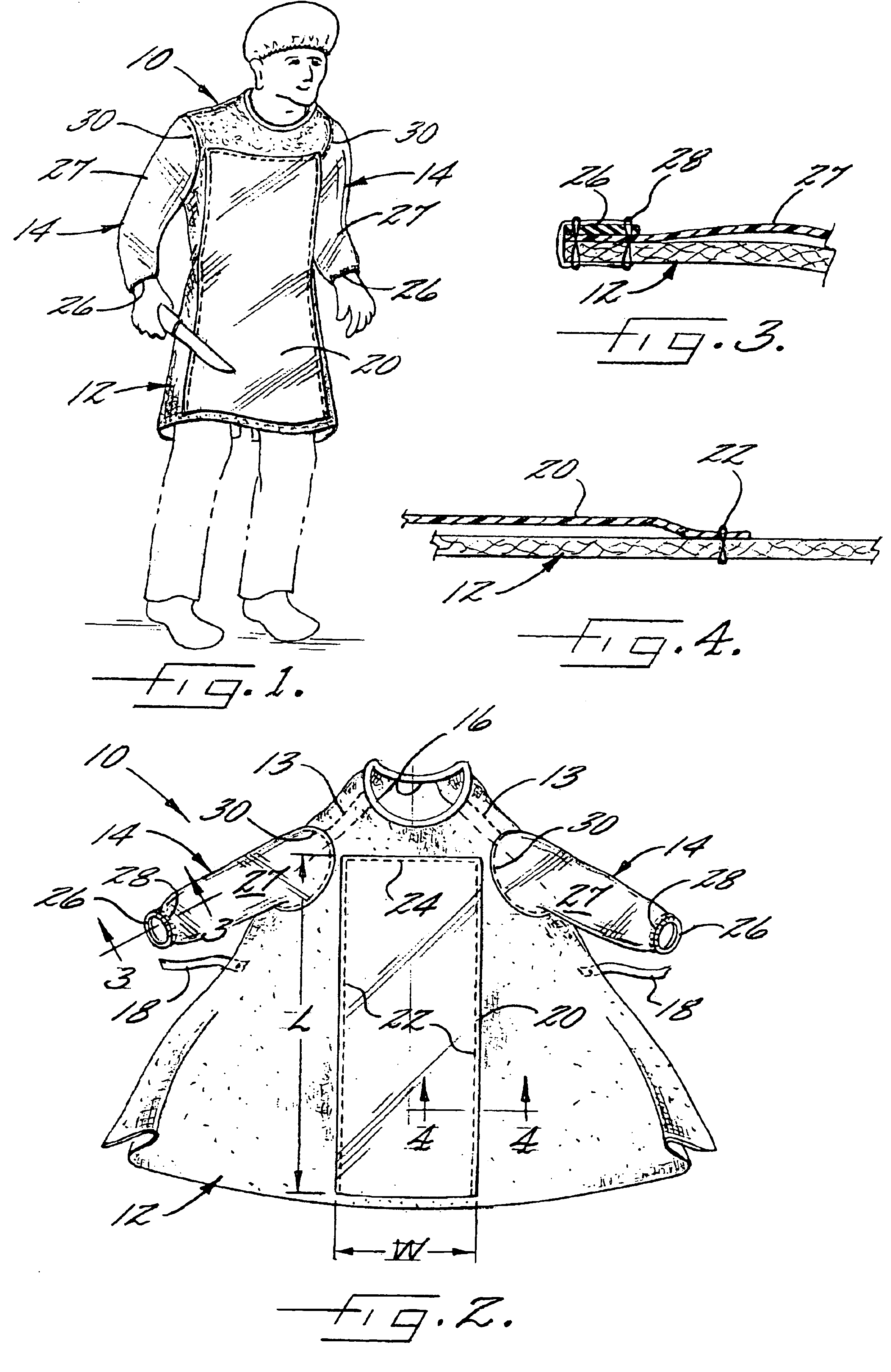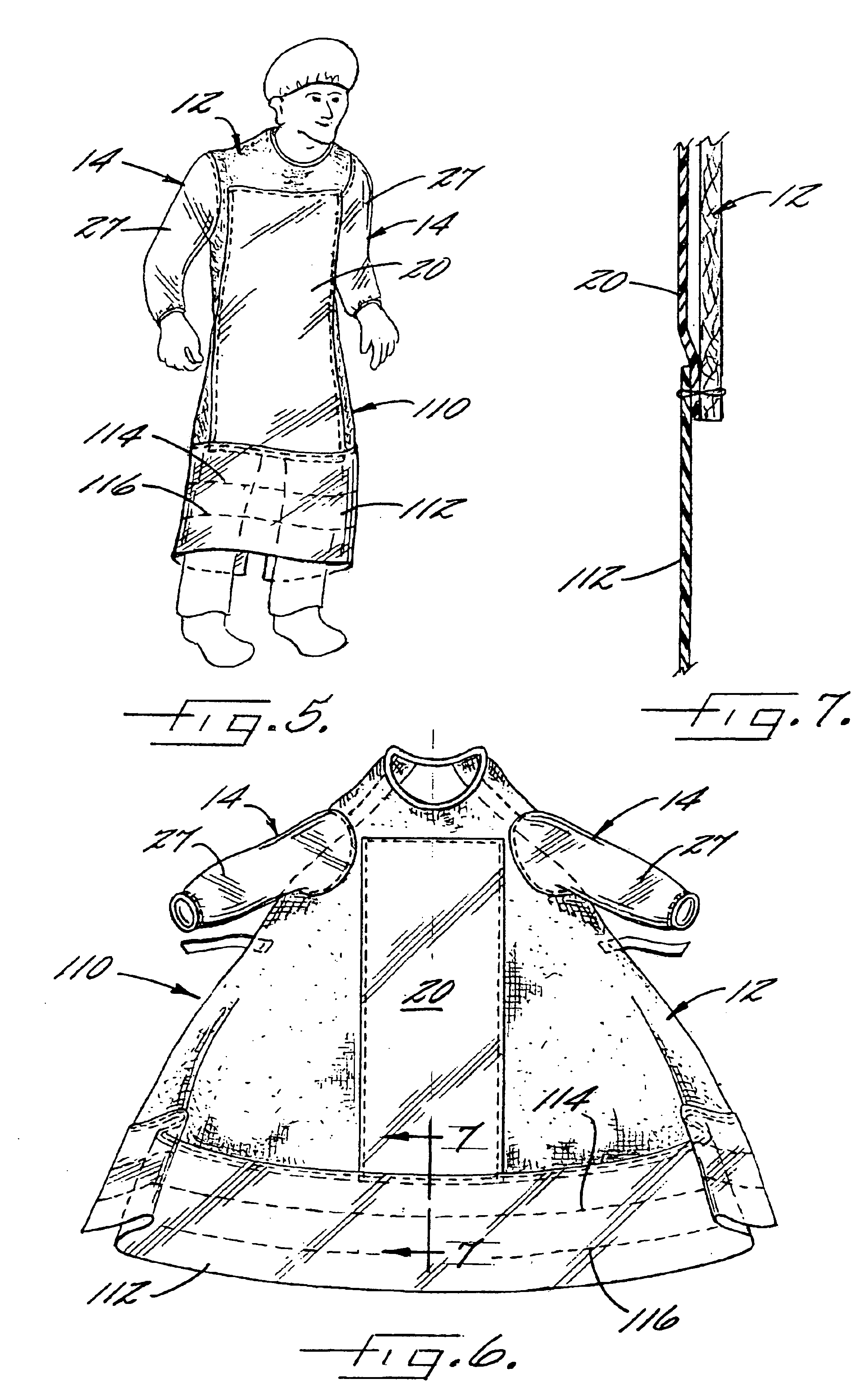Protective garment
a technology of protective garments and smocks, applied in chemical protection, nuclear engineering, nuclear elements, etc., can solve the problems of difficult to meet the requirements of laundering and smocks, easy to absorb liquids, and entail significant effort and expens
- Summary
- Abstract
- Description
- Claims
- Application Information
AI Technical Summary
Benefits of technology
Problems solved by technology
Method used
Image
Examples
Embodiment Construction
[0021]The present invention now will be described more fully hereinafter with reference to the accompanying drawings, in which preferred embodiments of the invention are shown. This invention may, however, be embodied in many different forms and should not be construed as limited to the embodiments set forth herein; rather, these embodiments are provided so that this disclosure will be thorough and complete, and will fully convey the scope of the invention to those skilled in the art. Like numbers refer to like elements throughout.
[0022]With reference to FIGS. 1 and 2, a protective garment 10 in accordance with one embodiment of the invention is shown. The garment 10 includes a body portion 12 that is sized to wrap about a person's body so that it covers at least the front and preferably also the sides of the body, and more preferably covers the front, sides, and back of the body. The height of the garment can vary depending on the intended use and the proportions and size of the we...
PUM
 Login to View More
Login to View More Abstract
Description
Claims
Application Information
 Login to View More
Login to View More - R&D
- Intellectual Property
- Life Sciences
- Materials
- Tech Scout
- Unparalleled Data Quality
- Higher Quality Content
- 60% Fewer Hallucinations
Browse by: Latest US Patents, China's latest patents, Technical Efficacy Thesaurus, Application Domain, Technology Topic, Popular Technical Reports.
© 2025 PatSnap. All rights reserved.Legal|Privacy policy|Modern Slavery Act Transparency Statement|Sitemap|About US| Contact US: help@patsnap.com



